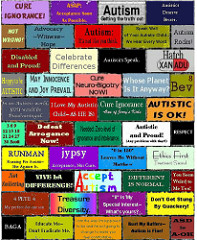Traditional ways of understanding processes
Often science has taken the approach of understanding how things work by examining situations in which things don’t work, or in which they work differently, e.g. mutations in Drosophila flies or Arabidopsis plants, or disease processes. On one hand, these situations help reveal the mechanisms / processes by showing us where to look, and by giving us a comparison for what does or does not happen.
For example, when we have plants infested with insects, sometimes we see the insects (often we don’t see them because they hide on the undersides of the leaves; insects are not intelligent, but they aren’t stupid either), sometimes we see signs of the insects themselves (such as frass, a technical word for insect poop), and sometimes we observe or measure the symptoms caused by the insects’ feeding (such as red discoloration on sorghum from greenbug aphids).
When we have people infected with diseases, we can also see the outward signs or the symptoms reported by the patient, but we cannot see the disease itself. If the disease is caused by an organism, such as a bacterium, fungus, or virus, we can see the agent, but that is not the disease. The disease rather is the mal effect upon proper functioning caused by one organism upon another*. Diseases can also be autonomic, caused by something from within the organism itself; diseases in this sense are processes gone wrong.
Technically, something is a disease if it has a predictable set of symptoms, with some sense of the cause of those symptoms, and the physiology of how they are expressed. If the cause or the physiological dysfunction is unknown, it is not a disease, but a disorder. When repeated sets of symptoms are observed, they are referred to as a disorder. Although some disorders may be treated pharmaceutically, they are not diseases.
We cannot see the disease itself, rather, the disease is something inferred by the observations and dialogue between the people with and people without the disease. In contrast, a disorder is often only discerned by the people without such, because it is defined by comparison; order is defined by like, and disorder is defined by not-like. Diagnoses are defined by relationships and perception as much as, or even more so, the physical states.
Limitations of inference
When we have people who are autistic (et cetera), we diagnose it likewise by the “signs and symptoms” or the observable data of the behaviors. What we cannot necessarily determine are the causes of those behaviors. It is an accepted fact in some disciplines of science (such as ecology) that the specific process cannot necessarily be determined by the end results! We can hypothesize several likely causes, or series of causes that would produce the current situation, and we can do experiments to test if we get similar results, but those experiments do not guarantee that the specific causes and processes are what caused the current situation.
Quite frankly, our ability to understand what is going on is limited by both our ways of thinking, and by our abilities of perceiving the world. Ethologists who study animals are more often aware of their inabilities to share the same perceptions as their subjects than are behaviorists, because it is more obvious that the Umwelt (perceptual world) of a honeybee is different than that of a human being.
What we can discover is determined by how we approach the problem conceptually as much as by the methods we use, or by the data we gather (i.e., “If the only tool you have is a hammer, all of your problems look like nails.”)
A person who assumes that the behavior exhibited by another person results from a particular set of sensory inputs and mental processing, is therefore going to be limited in, and also sometimes erroneous in their understanding of that behavior. Five different people can do the same thing for five entirely different reasons. For one of them to assume that the others do the same thing for the same reason they do is a kind of egocentrism. In this way, the much-vaunted neurotypical “theory of mind” that allows people to guess others’ motivations by implicit information can actually lead them astray, because they assume that others do things for the same reasons they do.
Conversely, when people do not see the expected behavioral results from certain circumstances, they can sometimes misunderstand what is going on and why. If several people laugh at a television show and I do not, they may assume that I do not have a sense of humor. In truth, I have a well-developed sense of humor, and will spontaneously giggle at things I remember, or jokes I remember and re-tell to myself, or laugh from other television shows, but I do not always find the same things funny that others do. In this case, their conceptual limitations prevent them from understanding alternative causes.
Even if all the information is present to be observed, and even gets recorded through some miraculous accident of experimental design, the underlying causes and effects may still be hidden because the observer has neither the intent nor the capacity to notice and understand it. We can only answer the questions we ask, even if additional answers are there in front of us. Likewise, if we ask questions the wrong way, we will not be able to learn the right kind of information.
The current mode of research has derived from the pathology model, where we try to figure out what goes wrong. This is not bad. This is a necessary approach, in many ways. But it should not be the only approach. One of the best ways to figure out what we should do, and what does work, is to examine the successes!
Problem 1: warped perspective
It is because of the historical origin of psychology, (it stems from studies of mental problems) that the dominant paradigm is “average = normal”. Much of the diagnostic phrasing is focused on disorders, and it tends to pathologize what is different from the norm. If you don’t fit within the boundaries, then something is wrong with you, not that the situation doesn’t fit you.
On the other hand, these situations also tend to give us a warped perspective. The warping stems from the fact that identifying processes by “broken-ness” gives one a “Dysfunction” – and dysfunctional – view of the universe. Things working = function = normal. Things working otherwise = not working = dysfunctional = abnormal.
To follow the disease model is not correct because average is presumed to be equivalent to normal. Actually, “normal” is a value-laden word, because “normal” means both “average” and it means “okay”. Abnormal means not-average and not-okay. It is a false dichotomy to assume that not-average means abnormal!
There are those who deny the appropriateness of difference; one must do their best to fit it and not be different to be okay and accepted. I am different in many ways, many not visible. One difference is visible: I have fair skin and rather than tanning, will freckle and easily sunburn. This is genetic. Because of this genetic difference, I exhibit different behaviors than do most of my peers. For example, I do not use tanning beds or lay out on beach towels to sunbathe, and will do my field work clad in a brimmed hat, sunglasses, bandanna, long-sleeve shirt, cotton gloves with the fingertips trimmed off, long pants, and socks. The average person does not wear this much clothing when outdoors on a 104° F/40°C day; however, no one would say that I am “abnormal” for exhibiting these behaviors. These behaviors are appropriate and healthy for someone of my genetic makeup; they prevent me from stressing and harming myself. These behaviors do not create problems for others, and only create social disturbance because they are uncommon in some social realms. There are no, nor should there be, any negative value judgments attached to behaving differently than my peers because of this genetic difference.
I am also sensitive to noise, especially chaotic or high-frequency noises, and will in some situations wear ear-plugs, withdraw to a corner, or limit the frequency or duration of my visits to certain places. These behaviors are appropriate and healthy for me; they prevent me from stressing and getting severe headaches. In contrast, these behaviors are considered odd or unacceptable, but without them I can end up twitching, grimacing or swaying from the noise stress, and these reactions are considered even more unacceptable!
Then there are those who deny differences exist as real differences, and that if one cannot achieve things in the same way or at the same rate as “everyone else”, then they just are not trying hard enough or are stupid. People with AD/HD (et cetera) are simply “making excuses”.
“Everyone else” is an interesting myth of self-contradiction; it assumes that everyone is the same, while at the same time acknowledges the fact that one is not the same. The myth of “everyone else” makes the different person responsible for the having and resolving the problem that others create. The meta-issue here is that the person’s difference is not the problem – the others’ lack of acceptance is the problem! I do not “suffer” from any number of differences I have, I suffer from the lack of acceptance and understanding of those differences and how I can best function.
The unsavory alternative to people rejecting differences can be their amazement that people can accomplish things “despite” disabilities. Imagine during World War II, when in the US women went to work in factories. That women had competently done hard manual labor in factories in previous decades was often forgotten (the working poor or various ethnic groups didn’t count of course); instead there was amazement and collective self-applause because my goodness, women not only wanted to do factory work (how noble! how patriotic!), but could even do the factory work and do it well (how extraordinary). Those women workers who could perform well were an inspiration, they could overcome their lack of mechanical expertise, or inherent female weakness or even the fact that they suffered from monthly hysteria. Of course, after the war was over, the women were to cheerfully return to their kitchens and let men do the “real” work; factories wanted their normal, able workers. Of course, such attitudes seem dated and silly now; there is nothing amazing about women working, just people with “disabilities” getting college degrees or married or having families or working or …
Problem 2: assigned motivations
Another problem with the current model is that it tends to assign motivations that do not necessarily exist. For example, someone offers to share with me a slice of his or her home-baked, fragrant, pecan pie. If I smell the pie and love to eat pecan pie, I should [want to] eat the pie, shouldn’t I? But behavior is not merely stimulus-response; there is also the previous history of the organism, the perceptual realm, the mental processing, and the current state of the organism. For example, previous experience may lead me to drool when I smell pecan pie, but if I am not hungry then I will not have this reaction. If my nose is stuffy from a head cold and I can neither smell nor taste much, then I won’t have this reaction. If the offer of pecan pie comes with the additional requirement of staying and eating it at an intolerably noisy-busy lunchroom then I may also decline to choose to eat the pie. The person offering the pie may imagine a whole variety of motivations for my refusal of the pie, including suppositions about my judgment of their ability to cook good pies, or my desire to socialize with them. These motivations are imagined, and do not necessarily exist!
Problem 3: disemphasis
Although my differences affect what I do and how I do things, they do not exist separately from me, nor they responsible things, e.g., my ADHD is not “being bad today”. I may be judged “unsocial” when rather I am adverse to be in crowded, noisy places. This actually transfers my real or perceived motivations from my thoughts and my actions, and assigns them to the “unsocial dysfunction”.
The problem with this is that it changes the emphasis of thought from who I am and what I need to “what my problem is” and “what treatment my disorder requires”. Just as hospital patients run the risk of not only acquiring not only nosocomial infections, they also run the risk of being identified by or replaced by and treated as their maladies, e.g. “the COPD in room 243”.
Lacking diagnoses (and attendant “treatments”) for many years, I cannot say what my life would have been like had I been considered to be a child student with disabilities. I can say that missed diagnoses are just as bad as mis-diagnoses. I can also say that as an adult, the time I must spend getting diagnoses done, paperwork filed to “prove” such (it’s not real unless someone else says so on paper), making arrangements for “accommodations” (one must be very “special” to have enough time to finish a test, and to take it without a lot of distractions), having to go through the schedule re-arrangements required for such, and all the other stuff rather detracts from other things I could be doing, like studying or lab work. This really improves my ability to be a good student, right?
* If disease rather is the mal effect upon proper functioning caused by one organism upon another, could we then assert that some teachers/ clinicians/ social workers cause disease in autistics by interfering with their normal functioning?








